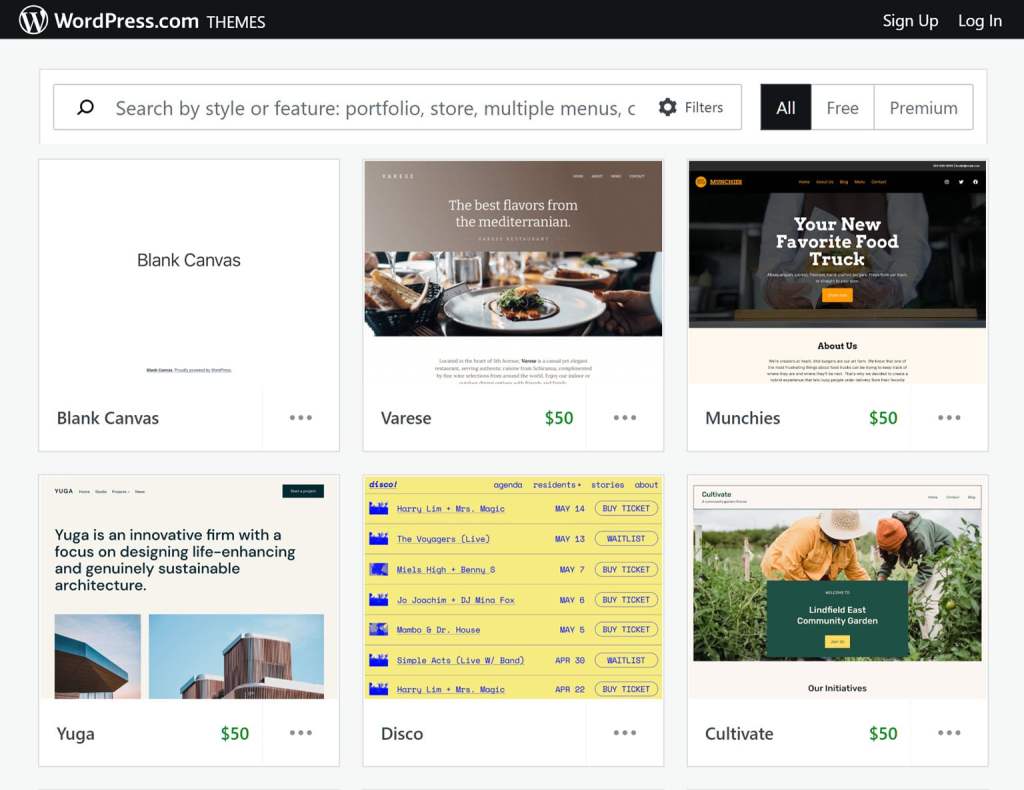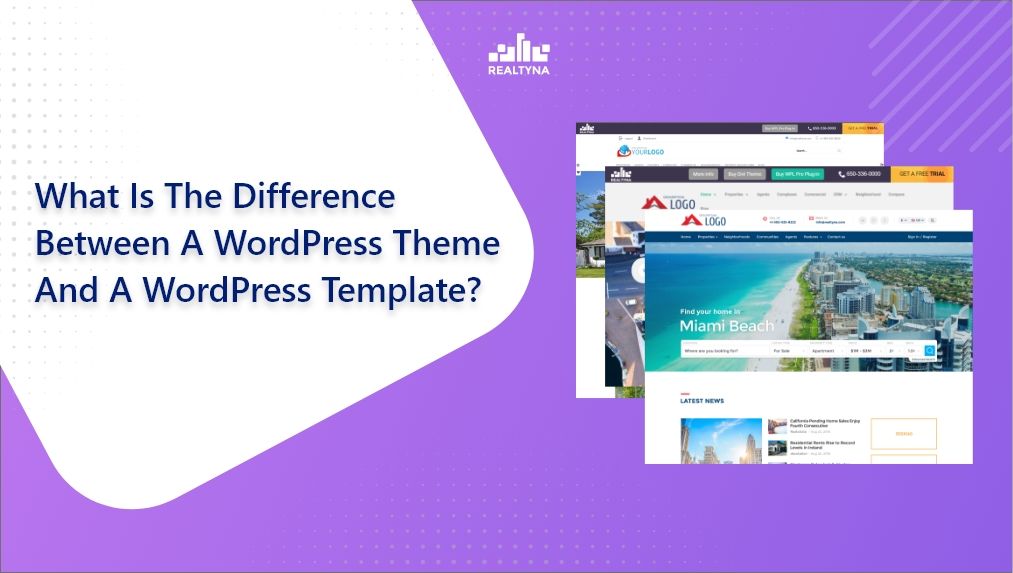WordPress Theme vs Template: Key Differences, Pros, Cons, and How to Choose for Your Website
When I first started building websites with WordPress I kept running into the words “theme” and “template.” At first they sounded almost the same but I quickly realized they’re not interchangeable. Knowing the difference can save a lot of time and confusion especially when you’re trying to make your site look just right.
Choosing the right WordPress theme or template shapes your entire site’s appearance and functionality. If you’re unsure which one you need or how they work together you’re not alone. Let me break down the basics so you can make smarter decisions for your website and get the results you want.
Understanding the Basics: WordPress Theme vs Template
A WordPress theme defines the overall design, layout, and functionality for an entire website. Themes include stylesheets, templates, images, and custom code to manage site-wide appearance. I use themes to set colors, typography, and layout frameworks across all pages.
A WordPress template affects a specific page or post type within a theme. Templates apply to single posts, archives, or unique landing pages, controlling only selected content sections. I assign templates to change the appearance of individual pages without altering the global look.
Key Differences Between WordPress Themes and Templates
| Feature | WordPress Theme | WordPress Template |
|---|---|---|
| Scope | Entire website design and layout | Specific page/post type layout |
| Components | Multiple templates, functions, and style files | Single PHP file for a certain page type |
| Customization | Global colors, typography, site structure | Unique layouts for chosen content |
| Usage Example | Blog, portfolio, business site | Casino homepage, casino game listing |
WordPress Themes and Templates in Casino Websites
I select a casino WordPress theme for comprehensive branding, integrating premium layouts, payment systems, and custom icons. I choose a casino template for specific pages like games catalog, promotions, or membership areas, customizing each section while maintaining the main casino theme framework.
Key Differences Between WordPress Theme and Template
WordPress themes and templates perform distinct functions in website design. These differences affect site management, structure, and flexibility.
Design and Layout Functionality
Themes control the entire website’s visual identity, dictating styles like colors, typography, and header styles across all pages. Templates apply to single pages or post types, shaping the appearance and structure inside theme boundaries. For example, a theme may set the primary color palette for an online casino, while templates define the layout for the casino’s game catalog or bonus page.
Scope and Application
Themes impact every public-facing part of a WordPress site, including menus, sidebars, and footers. Templates address specific sections or content types, such as landing pages, blog posts, or product pages. If I update a theme, I adjust the look and feel sitewide. If I edit a template, I only affect the targeted area like a casino’s game detail page or a promotional landing page.
Customization Options
Themes support customizations through theme options, widgets, and built-in customizer settings for global changes. Templates allow direct edits or use of page builders (e.g., Elementor, WPBakery) for localized adjustments. For a casino site, this means using the theme to update the entire casino brand’s appearance and templates to tailor the design of the slot or table game sections.
Comparison Table: Theme vs Template
| Feature | WordPress Theme | WordPress Template |
|---|---|---|
| Design Control | Full site (global styles) | Single page or content type |
| Application Example | Casino homepage, main site functions | Casino game catalog, bonus page |
| Customization Location | Theme customizer, settings panel | Page editor, template files |
| Update Impact | Sitewide changes | Changes only to individual sections |
| Common Files Used | style.css, functions.php |
page.php, single.php |
| Use in Casino Sites | Defines overall brand and navigation | Customizes specific game pages |
Pros and Cons of WordPress Themes
WordPress themes set the global look, functionality, and user experience of an entire site. Their features, limitations, and impact should align with a site’s goals and workflows. I use these factors to evaluate theme choices.
Pros of WordPress Themes
- Global Visual Consistency: Themes apply uniform styles across all pages. Main colors, typography, and layout structures stay consistent, which strengthens branding and readability for every visitor.
- Extensive Feature Sets: Most themes include built-in tools such as custom widgets, pre-designed templates, and integrations (e.g., WooCommerce, page builders). I often find bundled header options, slider plugins, and navigation layouts within a single theme.
- Streamlined Updates: Theme developers usually release frequent updates for security and feature improvements. Centralized updates simplify site maintenance for me.
- Scalable Customization: Advanced themes offer customizer settings, drag-and-drop options, and developer-friendly code frameworks, letting me make site-wide changes without coding each page.

Cons of WordPress Themes
- Overlapping Styles: Multiple themes may conflict with plugin or custom styles, leading to display errors or broken layouts, particularly for custom casino catalog pages or bonus sections.
- Limited Page-Specific Flexibility: Themes often restrict granular layout changes to individual pages unless paired with sophisticated page builders or custom coding, so I can’t always achieve unique designs for special landing pages.
- Dependency on Theme Updates: Outdated themes increase security risks and compatibility issues. If a theme developer halts support or releases breaking changes, I must migrate or fix errors myself.
- Code and Performance Bloat: Feature-heavy themes sometimes load unused code, scripts, or styles, impacting site speed and SEO rankings—essential for casino sites running large libraries and bonus offers.
Table: Pros and Cons of WordPress Themes
| Factor | WordPress Themes: Pros | WordPress Themes: Cons |
|---|---|---|
| Visual Identity | Consistent site-wide | Harder to customize per page |
| Features | Bundled tools/integrations | May cause code bloat |
| Maintenance | Single update process | Reliant on developer support |
| Flexibility | Global change options | Less granular without page builder |
| Security | Frequent patches | Vulnerable if abandoned |
Casino Site Example: Theme Impact on Branding
| Theme Feature | Casino Site Application | Resulting Benefit |
|---|---|---|
| Global color palette | Applies casino colors to all pages | Ensures brand consistency |
| Built-in slider | Promotes top bonuses on homepage | Increases user engagement |
| Custom header layouts | Features game categories site-wide | Improves navigation |
| WooCommerce support | Integrates payment options | Enables real-money features |
Themes define every aspect of a site’s structure, so their selection directly determines branding, user interaction, and content display across all casino pages and categories.
Pros and Cons of WordPress Templates
WordPress templates focus on structuring individual pages or content types, affecting only the sections where they’re applied. Below I summarize key advantages and drawbacks based on flexibility, usability, maintenance, and performance.
Pros of WordPress Templates
- Page-Level Customization: Templates let me adjust layouts for single pages, such as landing pages or blog posts, without changing the whole site’s design.
- Targeted Functionality: I can add special features—like rating systems or custom navigation—to a particular page template, supporting unique calls-to-action or page-specific content.
- Design Variability: I create distinct looks for important pages, such as the homepage or review listings, ensuring each serves its purpose effectively.
- Faster Load Times: Applying fewer custom scripts and styles is possible with templates than with themes, enhancing performance on single pages.

Cons of WordPress Templates
- Limited Global Impact: I only modify single pages, so templates don’t provide site-wide branding or consistency.
- Increased Management: Using many templates means tracking updates and compatibility across each one, increasing maintenance.
- Dependency Risk: Template updates may break custom features; reliance on third-party templates elevates the support risk.
- Customization Gaps: Achieving broader changes requires switching theme files or core WordPress behavior, limiting what templates alone offer.
Comparison Table: Themes vs Templates in WordPress
| Feature | WordPress Theme | WordPress Template |
|---|---|---|
| Scope | Full site design and layout | Specific page or post customization |
| Impact Area | Global (all pages) | Local (selected pages/types) |
| Customization | Branding, navigation, typography, colors | Per-page layout, content blocks |
| Maintenance | Bulk updates | Individual template updates |
| Page Speed | Possible bloat if feature-heavy | Lightweight, fewer scripts/styles |
How Casino Bonus Pages Benefit from Templates
I use WordPress templates to build casino bonus pages that highlight promotional details without altering the global casino website branding. For example, custom templates display bonus tables, promo terms, and eligibility rules only on the bonus section, maintaining a clear distinction from the general casino site’s style elements. This targeted control supports both effective page marketing and regulatory requirements.
Choosing the Right Option for Your Website
Selecting between a WordPress theme and a template depends on several factors, including project scope, design preferences, and management strategy. I evaluate these elements before making a decision to ensure the most efficient setup.
Factors Affecting My Choice
- Site-wide Consistency: I use a theme if I need a unified visual identity and consistent functionality across all pages, such as when launching a brand or rebranding.
- Page-Level Customization: I choose templates for specific content pages that require unique layouts or features, such as custom landing pages for promotions, while retaining global design standards.
- Customization Needs: I favor themes when global changes are a priority, and select templates if I want to fine-tune individual sections without changing the overall appearance.
- Update Management: I apply themes for streamlined maintenance when I want global updates, but opt for templates for isolated changes with minimal risk to overall site stability.
Comparative Table: Theme vs Template Selection Criteria
| Consideration | Prefer Theme | Prefer Template |
|---|---|---|
| Branding | Brand-wide identity, eg: casino site look | Page-level flair, eg: casino bonus page |
| Consistency | All pages uniform | Custom appearance for select pages |
| Customization | Global design options | Localized, page-specific structure |
| Frequency of Edits | Rare, large-scale modifications | Frequent, incremental updates |
| Management | Central control | Separate management for critical pages |
Example: Casino Website Design Choices
Casino sites benefit from using a theme for cohesive branding across all sections, including games, account management, and support. For promotional content, such as a bonus details page or exclusive offers, I create a template within the theme. This approach ensures the unique design needs of high-conversion pages are met without disrupting the uniform player experience established by the main theme.
| Page Type | Approach | Reason |
|---|---|---|
| Home, Games, Support | Theme | Maintains brand consistency and navigation flow across all user touchpoints |
| Bonus, Promotions, Reviews | Template | Highlights bonuses with custom layouts, enhancing marketing effectiveness |
Conclusion
Choosing between a WordPress theme and a template comes down to understanding your site’s needs and your goals for branding and customization. I always recommend thinking about how much control you want over your site’s appearance and how often you plan to make changes.
If you’re building a casino website or any project where both consistency and flexibility matter, it’s smart to leverage both themes and templates. This approach lets you create a seamless user experience while still tailoring key pages for promotions or special content. By making informed choices, you’ll set your site up for long-term success and easier management.
